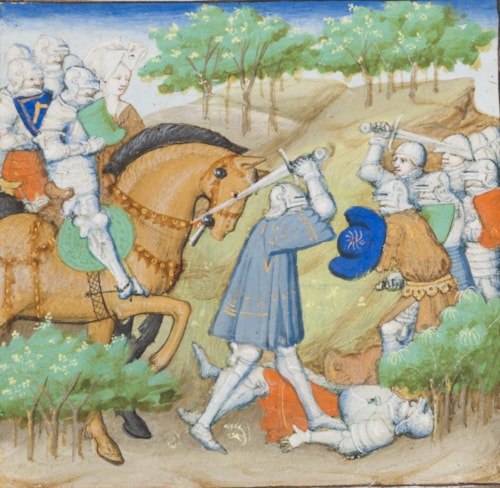
THE DUNOIS MASTER (JEAN HAINCELIN?)
c.1466 Fl. c.1430
Biography
Formerly known as the Chief Associate of the Bedford Master, the Dunois Master was a Parisian illuminator active in the middle of the 15th century, whose name derives from a book of hours made for Jean d’Orléans, Count of Dunois, which is now in the British Library in London. The Dunois Master is regarded as the finest pupil and assistant of the Bedford Master - named for his illumination of two manuscripts commissioned by John of Lancaster, Duke of Bedford - and succeeded him as the leading manuscript illuminator in Paris after the departure of the English from the city in 1436. Like the Bedford Master, the Dunois Master was familiar with the work of such Flemish artists as Jan Van Eyck and Robert Campin, whose influence can be seen in his illuminations. Not long after the recapture of Paris by the French, the Dunois Master began receiving commissions from important patrons at the court of King Charles VII, including the aforementioned Jean de Dunois, Jouvenel des Ursins, Simon de Varie and Etienne Chevalier. He is also thought to have also painted a large altarpiece for Notre-Dame. Regarded as one of the leading figures in the field of 15th century French courtly manuscript illumination, the Dunois Master enjoyed a relatively long career until the 1460s. Recent scholarship has posited that the Dunois Master was one Jean Haincelin, who is recorded as an ‘enlumineur’ in Paris in 1438 and 1448. Haincelin may have been the son of the early 15th century Alsatian illuminator Haincelin von Hagenau, who has in turn been tentatively identified as the Bedford Master.


